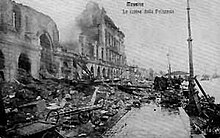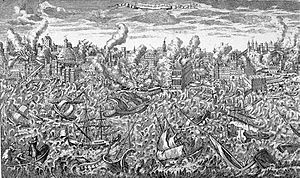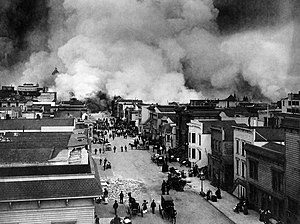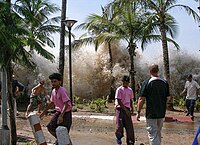A. PENGERTIAN PENDERITAAN
Penderitaan berasal dari kata derita. Kata derita berasal dari bahasa sansekerta dhra
artinya menahan atau menanggung. Derita artinya menanggung atau merasakan sesuatu
yang tidak menyenangkan. Penderitaan itu dapat lahir atau batin, atau lahir batin.
Penderitaan akan dialami oleh semua orang, hal itu sudah merupakan “risiko” hidup.
Tuhan memberikan kesenangan atau kebahagiaan kepada umatnya, tetapi juga
memberikan penderitaan atau kesedihan yang kadang-kadang bermakna agar manusia
sadar untuk tidak memalingkan dariNya.
B. SIKSAAN
Siksaan dapat diartikan sebagai siksaan badan atau jasmani, dan dapat juga berupa
siksaan jiwa atau rohani. Akibat siksaan yang dialami seseorang, timbullah penderitaan.
Siksaan yang dialami manusia dalam kehidupan sehari-hari banyak terjadi dan banyak
dibaca di berbagai media massa. Bahkan kadang-kadang ditulis di halama pertama
dengan judul huruf besar, dan kadang-kadang disertai gambar si korban.
Kebimbangan di alami oleh seseorang bila ia pada suatu saat dapat menentukan pilihan mana yang akan diambil. Kesepian dialami oleh seseorang merupakan rasa sepi dalam dirinya sendiri atau jiwanya walaupun ia dalam lingkungan orang ramai. Ketakutan merupakan bentuk lain yang dapat menyebabkan seseorang mengalami siksaan batin. Banyak sebab yang menjadikan seseorang merasa ketakutan, antara lain :
1. Claustrophobia dan Agoraphobia
2. Gamang merupakan ketakutan bila seseorang di tempat yang tinggi.
3. Kegelapan merupakan suatu ketakutan seseorang bila ia berada di tempat yang
gelap.
4. Kesakitan
5. Kegagalan
C. KEKALUTAN MENTAL
Tahapan-tahapan gangguan jiwa adalah :
1. Gangguan kejiwaan nampak dalam gejala-gejala kehidupan si penderita baik
jasmani maupun rohaninya.
2. Usaha mempertahankan diri dengan cara negatif, yaitu mundur atau lari, sehingga
cara bertahan dirinya salah, pada orang yang tidak menderita gangguan kejiwaan
bila menghadapi persoalan, justru lekas memecahkan problemnya, sehingga tidak
menekan perasaannya.
3. Kekalutan merupakan titik patah (mental breakdown) dan yang bersangkutan
mengalami gangguan.
Sebab-sebab timbulnya kekalutan mental, dapat banyak disebutkan antara lain sebagai
berikut :
1. Kepribadian yang lemah
2. Terjadinya konflik sosial budaya
3. Cara pematangan batin,
Bentuk frustrasi antara lain :
1. Agresi
2. Regresi
3. fiksasi
4. Proyeksi
5. Identifikasi
6. Narsisme
7. Autisme
Penderita kekalutan mental banyak terdapat dalam lingkungan seperti :
1. Kota-kota besar
2. Anak-anak muda usia
3. Wanita
4. Orang yang tidak berguna
5. Orang yang terlalu mengejar materi
D. PENDERITA DAN PERJUANGAN
Penderitaan adalah bagian kehidupan manusia yang bersifat kodrat. Penderitaan
dikatakan sebagai kodrat manusia, artinya sudah menjadi konsekwensi manusia hidup,
bahwa manusia hidup ditakdirkan bukan hanya untuk bahagia, melainkan juga menderita.
Pembebasan dari penderitaan pada hakekatnya meneruskan kelangsungan hidup. Caranya
ialah berjuang menghadapi tantangan hidup dalam alam lingkungan, masyarakat sekitar,
dengan waspada, dan disertai doa kepada Tuhan supaya terhindar dari bahaya dan
malapetaka.
E. PENDERITAAN, MEDIA MASSA DAN SENIMAN
Berita mengenai penderitaan manusia silih berganti mengisi lembaran koran, layar, tv, pesawat radio, dengan maksud supaya semua orang yang menyaksikan ikut merasakan dari jauh penderitaan manusia.
Media massa merupakan alat yang paling tepat untuk mengkomunikasikan peristiwa-
peristiwa penderitaan manusia secara cepat kepada masyarakat. Dengan demikian
masyarakat dapat segera menilai untuk menentukan sikap antara sesama manusia
terutama bagi yang merasa simpati.
F. PENDERITAAN DAN SEBAB-SEBABNYA
a. Penderitaan yang timbul karena perbuatan buruk manusia
Penderitaan yang menimpa manusia karena perbuatan buruk manusia dapat terjadi dalam
hubungan sesama manusia dan hubungan manusia dengan alam sekitarnya. Penderitaan
ini kadang disebut nasib buruk. Nasib buruk ini dapat diperbaiki manusia supaya menjadi
baik. Dengan kata lain, manusialah yang dapat memperbaikin nasibnya. Perbedaan nasib
buruk dan takdir, kalau takdir, Tuhan yang menentukan sedangkan nasib buruk itu
manusia penyebabnya.
b. Penderitaan yang timbul karena penyakit, siksaan / azab Tuhan
Penderitaan manusia dapat juga terjadi akibat penyakit atau siksaan / azab Tuhan. Namun
kesabaran, tawakal dan optimisme dapat merupakan usaha manusia untuk mengatasi
penderitaan itu. Banyak contoh kasus penderitaan semacam ini dialami manusia.
Beberapa kasus penderitaan dapat diungkapkan berikut ini :
1. Seorang anak lelaku buta sejak dilahirkan, diasuh dengan tabah oleh orang
tuanya.
2. Nabi Ayub mengalami siksaan Tuhan, tetapi dengan sabar ia menerima cobaan
ini.
3. Tenggelamnya Fir’aun di laut Merah seperti disebutkan dalam Al-Qur’an adalah
azab yang dijatuhkan Tuhan kepada orang yang angkuh dan sombong.
G. PENGARUH PENDERITAAN
Orang yang mengalami penderitaan mungkin akan memperoleh pengaruh bermacam-
macam dan sikap dalam dirinya. Apabila sikap negatif dan sikap positif ini
dikomunikasikan oleh para seniman kepada para pembaca, penonton, maka para
pembaca, para penonton akan memberikan penilainnya. Penilainnya itu dapat berupa
kemauan untuk mengadakan perubahan nilai-nilai kehidupan dalam masyarakat dengan
tujuan perbaikan keadaan.
Minggu, 30 Mei 2010
MANUSIA DAN PENDERITAAN
Diposting oleh Oktavianus Mulyadi di 05.17 0 komentar
Label: tugas
Rabu, 19 Mei 2010
Arti keindahan
Diposting oleh Oktavianus Mulyadi di 17.44 0 komentar
Label: tugas
Senin, 22 Maret 2010
Earthquake
An earthquake (also known as a quake, tremor, or temblor) is the result of a sudden release of energy in the Earth's crust that creates seismic waves. Earthquakes are recorded with a seismometer, also known as a seismograph. The moment magnitude (or the related and mostly obsolete Richter magnitude) of an earthquake is conventionally reported, with magnitude 3 or lower earthquakes being mostly imperceptible and magnitude 7 causing serious damage over large areas. Intensity of shaking is measured on the modified Mercalli scale.
At the Earth's surface, earthquakes manifest themselves by shaking and sometimes displacing the ground. When a large earthquake epicenter is located offshore, the seabed sometimes suffers sufficient displacement to cause a tsunami. The shaking in earthquakes can also trigger landslides and occasionally volcanic activity.
In its most generic sense, the word earthquake is used to describe any seismic event — whether a natural phenomenon or an event caused by humans — that generates seismic waves. Earthquakes are caused mostly by rupture of geological faults, but also by volcanic activity, landslides, mine blasts, and nuclear experiments. An earthquake's point of initial rupture is called its focus or hypocenter. The term epicenter refers to the point at ground level directly above the hypocenter.
Naturally occurring earthquakes
Tectonic earthquakes will occur anywhere within the earth where there is sufficient stored elastic strain energy to drive fracture propagation along a fault plane. In the case of transform or convergent type plate boundaries, which form the largest fault surfaces on earth, they will move past each other smoothly and aseismically only if there are no irregularities or asperities along the boundary that increase the frictional resistance. Most boundaries do have such asperities and this leads to a form of stick-slip behaviour. Once the boundary has locked, continued relative motion between the plates leads to increasing stress and therefore, stored strain energy in the volume around the fault surface. This continues until the stress has risen sufficiently to break through the asperity, suddenly allowing sliding over the locked portion of the fault, releasing the stored energy. This energy is released as a combination of radiated elastic strain seismic waves, frictional heating of the fault surface, and cracking of the rock, thus causing an earthquake. This process of gradual build-up of strain and stress punctuated by occasional sudden earthquake failure is referred to as the Elastic-rebound theory. It is estimated that only 10 percent or less of an earthquake's total energy is radiated as seismic energy. Most of the earthquake's energy is used to power the earthquake fracture growth or is converted into heat generated by friction. Therefore, earthquakes lower the Earth's available elastic potential energy and raise its temperature, though these changes are negligible compared to the conductive and convective flow of heat out from the Earth's deep interior.[1]Earthquake fault types
Earthquakes away from plate boundaries
Where plate boundaries occur within continental lithosphere, deformation is spread out over a much larger area than the plate boundary itself. In the case of the San Andreas fault continental transform, many earthquakes occur away from the plate boundary and are related to strains developed within the broader zone of deformation caused by major irregularities in the fault trace (e.g. the “Big bend” region). The Northridge earthquake was associated with movement on a blind thrust within such a zone. Another example is the strongly oblique convergent plate boundary between the Arabian and Eurasian plates where it runs through the northwestern part of the Zagros mountains. The deformation associated with this plate boundary is partitioned into nearly pure thrust sense movements perpendicular to the boundary over a wide zone to the southwest and nearly pure strike-slip motion along the Main Recent Fault close to the actual plate boundary itself. This is demonstrated by earthquake focal mechanisms.[2]All tectonic plates have internal stress fields caused by their interactions with neighbouring plates and sedimentary loading or unloading (e.g. deglaciation). These stresses may be sufficient to cause failure along existing fault planes, giving rise to intraplate earthquakes.[3]
Shallow-focus and deep-focus earthquakes
The majority of tectonic earthquakes originate at the ring of fire in depths not exceeding tens of kilometers. Earthquakes occurring at a depth of less than 70 km are classified as 'shallow-focus' earthquakes, while those with a focal-depth between 70 and 300 km are commonly termed 'mid-focus' or 'intermediate-depth' earthquakes. In subduction zones, where older and colder oceanic crust descends beneath another tectonic plate, deep-focus earthquakes may occur at much greater depths (ranging from 300 up to 700 kilometers).[4] These seismically active areas of subduction are known as Wadati-Benioff zones. Deep-focus earthquakes occur at a depth at which the subducted lithosphere should no longer be brittle, due to the high temperature and pressure. A possible mechanism for the generation of deep-focus earthquakes is faulting caused by olivine undergoing a phase transition into a spinel structure.[5]Earthquakes and volcanic activity
Earthquakes often occur in volcanic regions and are caused there, both by tectonic faults and the movement of magma in volcanoes. Such earthquakes can serve as an early warning of volcanic eruptions, like during the Mount St. Helens eruption of 1980.[6] Earthquake swarms can serve as markers for the location of the flowing magma throughout the volcanoes. These swarms can be recorded by seismometers and tiltimeters (a device which measures the ground slope) and used as sensors to predict imminent or upcoming eruptions.[7]Earthquake clusters
Most earthquakes form part of a sequence, related to each other in terms of location and time.[8] Most earthquake clusters consist of small tremors which cause little to no damage, but there is a theory that earthquakes can recur in a regular pattern.[9]Aftershocks
Earthquake swarms
Earthquake storms
Size and frequency of occurrence
Minor earthquakes occur nearly constantly around the world in places like California and Alaska in the U.S., as well as in Guatemala. Chile, Peru, Indonesia, Iran, Pakistan, the Azores in Portugal, Turkey, New Zealand, Greece, Italy, and Japan, but earthquakes can occur almost anywhere, including New York City, London, and Australia.[13] Larger earthquakes occur less frequently, the relationship being exponential; for example, roughly ten times as many earthquakes larger than magnitude 4 occur in a particular time period than earthquakes larger than magnitude 5. In the (low seismicity) United Kingdom, for example, it has been calculated that the average recurrences are: an earthquake of 3.7 - 4.6 every year, an earthquake of 4.7 - 5.5 every 10 years, and an earthquake of 5.6 or larger every 100 years.[14] This is an example of the Gutenberg-Richter law.
Most of the world's earthquakes (90%, and 81% of the largest) take place in the 40,000-km-long, horseshoe-shaped zone called the circum-Pacific seismic belt, also known as the Pacific Ring of Fire, which for the most part bounds the Pacific Plate.[18][19] Massive earthquakes tend to occur along other plate boundaries, too, such as along the Himalayan Mountains.
With the rapid growth of mega-cities such as Mexico City, Tokyo and Tehran, in areas of high seismic risk, some seismologists are warning that a single quake may claim the lives of up to 3 million people.[20]
Induced seismicity
Measuring and locating earthquakes
Every tremor produces different types of seismic waves which travel through rock with different velocities: the longitudinal P-waves (shock- or pressure waves), the transverse S-waves (both body waves) and several surface waves (Rayleigh and Love waves). The propagation velocity of the seismic waves ranges from approx. 3 km/s up to 13 km/s, depending on the density and elasticity of the medium. In the Earth's interior the shock- or P waves travel much faster than the S waves (approx. relation 1.7 : 1). The differences in travel time from the epicentre to the observatory are a measure of the distance and can be used to image both sources of quakes and structures within the Earth. Also the depth of the hypocenter can be computed roughly.
In solid rock P-waves travel at about 6 to 7 km per second; the velocity increases within the deep mantle to ~13 km/s. The velocity of S-waves ranges from 2–3 km/s in light sediments and 4–5 km/s in the Earth's crust up to 7 km/s in the deep mantle. As a consequence, the first waves of a distant earth quake arrive at an observatory via the Earth's mantle.
Rule of thumb: On the average, the kilometer distance to the earthquake is the number of seconds between the P and S wave times 8 [1]. Slight deviations are caused by inhomogenities of subsurface structure. By such analyses of seismograms the Earth's core was located in 1913 by Beno Gutenberg.
Effects/impacts of earthquakes

Shaking and ground rupture
Shaking and ground rupture are the main effects created by earthquakes, principally resulting in more or less severe damage to buildings and other rigid structures. The severity of the local effects depends on the complex combination of the earthquake magnitude, the distance from the epicenter, and the local geological and geomorphological conditions, which may amplify or reduce wave propagation.[24] The ground-shaking is measured by ground acceleration.Specific local geological, geomorphological, and geostructural features can induce high levels of shaking on the ground surface even from low-intensity earthquakes. This effect is called site or local amplification. It is principally due to the transfer of the seismic motion from hard deep soils to soft superficial soils and to effects of seismic energy focalization owing to typical geometrical setting of the deposits.
Ground rupture is a visible breaking and displacement of the Earth's surface along the trace of the fault, which may be of the order of several metres in the case of major earthquakes. Ground rupture is a major risk for large engineering structures such as dams, bridges and nuclear power stations and requires careful mapping of existing faults to identify any likely to break the ground surface within the life of the structure.[25]
Landslides and avalanches
Fires

Soil liquefaction
Tsunami

Ordinarily, subduction earthquakes under magnitude 7.5 on the Richter scale do not cause tsunamis, although some instances of this have been recorded. Most destructive tsunamis are caused by earthquakes of magnitude 7.5 or more.[29]
Floods
The terrain below the Sarez Lake in Tajikistan is in danger of catastrophic flood if the landslide dam formed by the earthquake, known as the Usoi Dam, were to fail during a future earthquake. Impact projections suggest the flood could affect roughly 5 million people.[32]
Tidal forces
Research work has shown a robust correlation between small tidally induced forces and non-volcanic tremor activity.[33][34][35][36]Human impacts

Major earthquakes
Preparation
In order to determine the likelihood of future seismic activity, geologists and other scientists examine the rock of an area to determine if the rock appears to be "strained". Studying the faults of an area to study the buildup time it takes for the fault to build up stress sufficient for an earthquake also serves as an effective prediction technique.[38] Measurements of the amount of accumulated strain energy on the fault each year, time passed since the last major temblor, and the energy and power of the last earthquake are made.[38] Together the facts allow scientists to determine how much pressure it takes for the fault to generate an earthquake. Though this method is useful, it has only been implemented on California's San Andreas Fault.[38]Today, there are ways to protect and prepare possible sites of earthquakes from severe damage, through the following processes: earthquake engineering, earthquake preparedness, household seismic safety, seismic retrofit (including special fasteners, materials, and techniques), seismic hazard, mitigation of seismic motion, and earthquake prediction. Seismic retrofitting is the modification of existing structures to make them more resistant to seismic activity, ground motion, or soil failure due to earthquakes. With better understanding of seismic demand on structures and with our recent experiences with large earthquakes near urban centers, the need of seismic retrofitting is well acknowledged. Prior to the introduction of modern seismic codes in the late 1960s for developed countries (US, Japan etc) and late 1970s for many other parts of the world (Turkey, China etc),[39], many structures were designed without adequate detailing and reinforcement for seismic protection. In view of the imminent problem, various research work has been carried out. Furthermore, state-of-the-art technical guidelines for seismic assessment, retrofit and rehabilitation have been published around the world - such as the ASCE-SEI 41 [40] and the New Zealand Society for Earthquake Engineering (NZSEE)'s guidelines [41].
History
Pre-Middle Ages
From the lifetime of the Greek philosopher Anaxagoras in the 5th century BCE to the 14th century CE, earthquakes were usually attributed to "air (vapors) in the cavities of the Earth".[42] Thales of Miletus, who lived from 625-547 (BCE) was the only documented person who believed that earthquakes were caused by tension between the earth and water.[42] Other theories existed, including the Greek philosopher Anaxamines' (585-526 BCE) beliefs that short incline episodes of dryness and wetness caused seismic activity. The Greek philosopher Democritus (460-371BCE) blamed water in general for earthquakes.[42] Pliny the Elder called earthquakes "underground thunderstorms".[42]Earthquakes in culture
Mythology and religion
In Norse mythology, earthquakes were explained as the violent struggling of the god Loki. When Loki, god of mischief and strife, murdered Baldr, god of beauty and light, he was punished by being bound in a cave with a poisonous serpent placed above his head dripping venom. Loki's wife Sigyn stood by him with a bowl to catch the poison, but whenever she had to empty the bowl the poison would drip on Loki's face, forcing him to jerk his head away and thrash against his bonds, causing the earth to tremble.[43]In Greek mythology, Poseidon was the cause and god of earthquakes. When he was in a bad mood, he would strike the ground with a trident, causing this and other calamities. He also used earthquakes to punish and inflict fear upon people as revenge.[44]
In Japanese mythology, Namazu (鯰) is a giant catfish who causes earthquakes. Namazu lives in the mud beneath the earth, and is guarded by the god Kashima who restrains the fish with a stone. When Kashima lets his guard fall, Namazu thrashes about, causing violent earthquakes.
Popular culture
In modern popular culture, the portrayal of earthquakes is shaped by the memory of great cities laid waste, such as Kobe in 1995 or San Francisco in 1906.[45] Fictional earthquakes tend to strike suddenly and without warning.[45] For this reason, stories about earthquakes generally begin with the disaster and focus on its immediate aftermath, as in Short Walk to Daylight (1972), The Ragged Edge (1968) or Aftershock: Earthquake in New York (1998).[45] A notable example is Heinrich von Kleist's classic novella, The Earthquake in Chile, which describes the destruction of Santiago in 1647. Haruki Murakami's short fiction collection, After the Quake, depicts the consequences of the Kobe earthquake of 1995.The most popular single earthquake in fiction is the hypothetical "Big One" expected of California's San Andreas Fault someday, as depicted in the novels Richter 10 (1996) and Goodbye California (1977) among other works. Jacob M. Appel's widely-anthologized short story, A Comparative Seismology, features a con artist who convinces an elderly woman that an apocalyptic earthquake is imminent In Pleasure Boating in Lituya Bay, one of the stories in Jim Shepard's Like You'd Understand, Anyway, the "Big One" leads to an even more devastating tsunami.
In the film 2012 (2009), solar flares (geologically implausibly) affecting the Earth's core caused massive destabilization of the Earth's crust layers. This created destruction planet-wide with earthquakes and tsunamis, foreseen by the Mayan culture and myth surrounding the last year noted in the Mesoamerican calendar - 2012.
Contemporary depictions of earthquakes in film are variable in the manner in which they reflect human psychological reactions to the actual trauma that can be caused to directly afflicted families and their loved ones. Disaster mental health response research emphasizes the need to be aware of the different roles of loss of family and key community members, loss of home and familiar surroundings, loss of essential supplies and services to maintain survival Particularly for children, the clear availability of caregiving adults who are able to protect, nourish, and clothe them in the aftermath of the earthquake, and to help them make sense of what has befallen them has been shown to be even more important to their emotional and physical health than the simple giving of provisions.As was observed after other disasters involving destruction and loss of life and their media depictions, such as those of the 2001 World Trade Center Attacks or Hurricane Katrina—and has been recently observed in the 2010 Haiti Earthquake, it is also important not to pathologize the reactions to loss and displacement or disruption of governmental administration and services, but rather to validate these reactions, to support constructive problem-solving and reflection as to how one might improve the conditions of those affected.
Diposting oleh Oktavianus Mulyadi di 09.13 0 komentar





